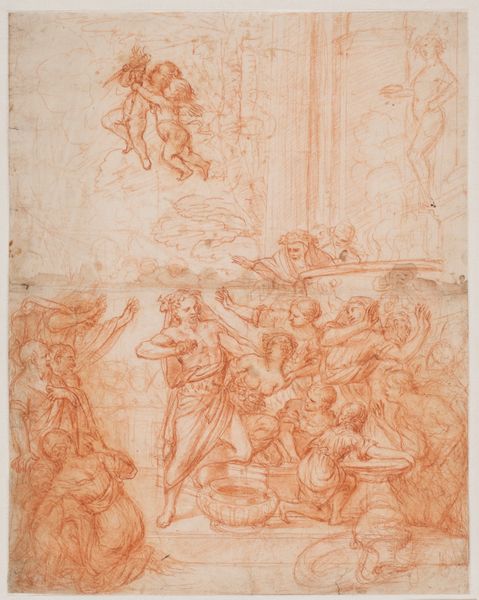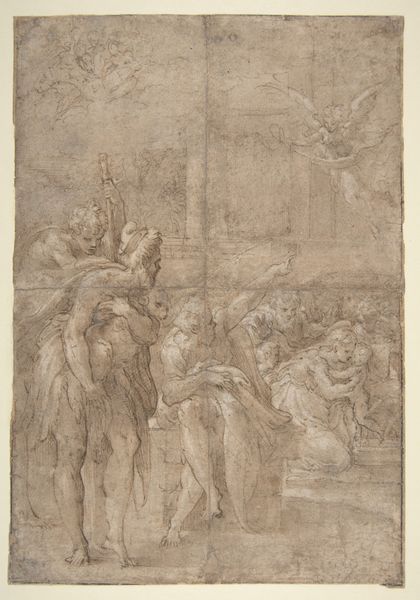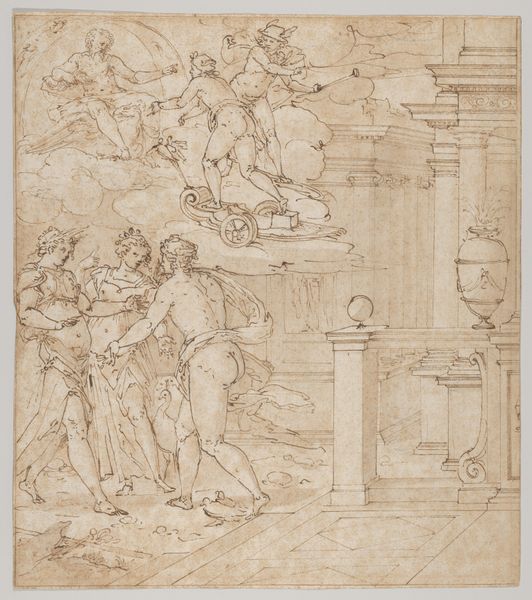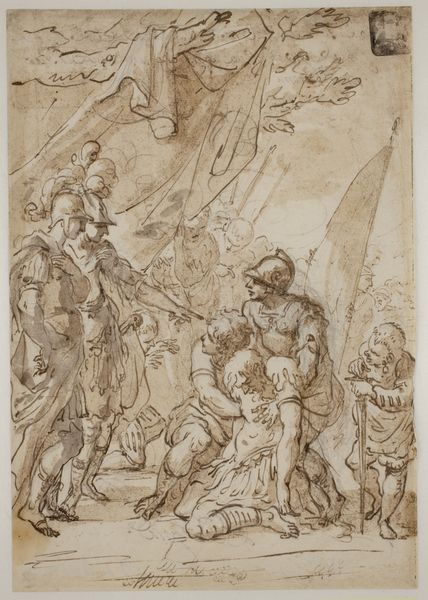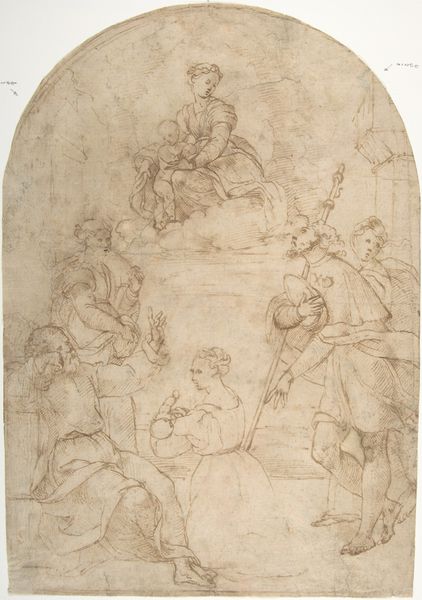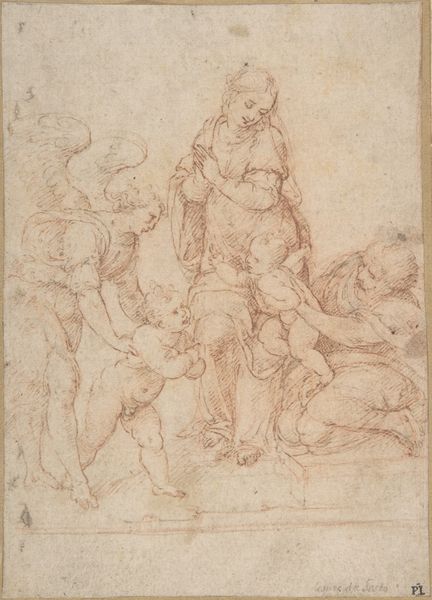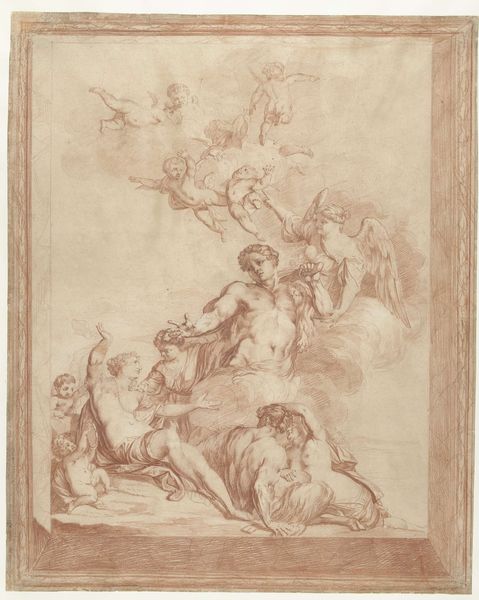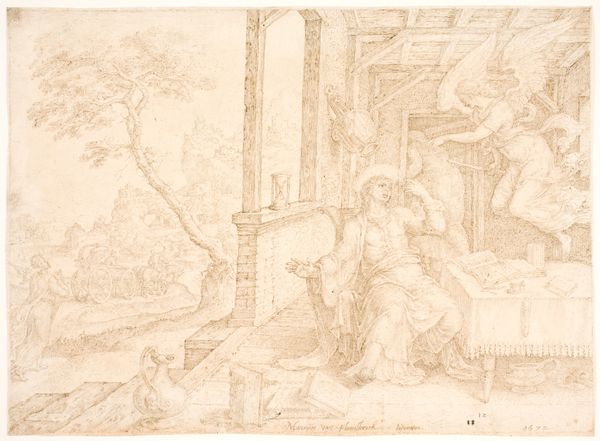
drawing, paper, chalk
#
drawing
#
narrative-art
#
ink painting
#
paper
#
chalk
#
history-painting
#
academic-art
Dimensions: 162 × 126 mm
Copyright: Public Domain
Camillo Procaccini made this drawing, The Miracle of the Ticino River, with red chalk, sometime around the turn of the 17th century. Procaccini’s choice of red chalk lends a warmth and immediacy to the scene. Chalk is a relatively direct medium, allowing for subtle gradations of tone and texture. Look closely, and you’ll see how the artist layers the chalk to create depth and volume, particularly in the figures’ drapery. The architectural elements in the background are sketched with a lighter touch, suggesting a sense of perspective and scale. The use of red chalk was common in the Renaissance and Baroque periods for preparatory sketches and studies, partly because the earth pigment could be sourced locally. The economy of the medium allowed the artist to focus on the composition and the arrangement of figures. It also allowed for revisions, as we see in the pentimenti, or visible traces of earlier marks. In the end, it is the trace of the artist's hand that is most evident. This drawing, with its apparent spontaneity, reminds us that art making is always a process of discovery, a dialogue between the artist and the material.
Comments
No comments
Be the first to comment and join the conversation on the ultimate creative platform.

